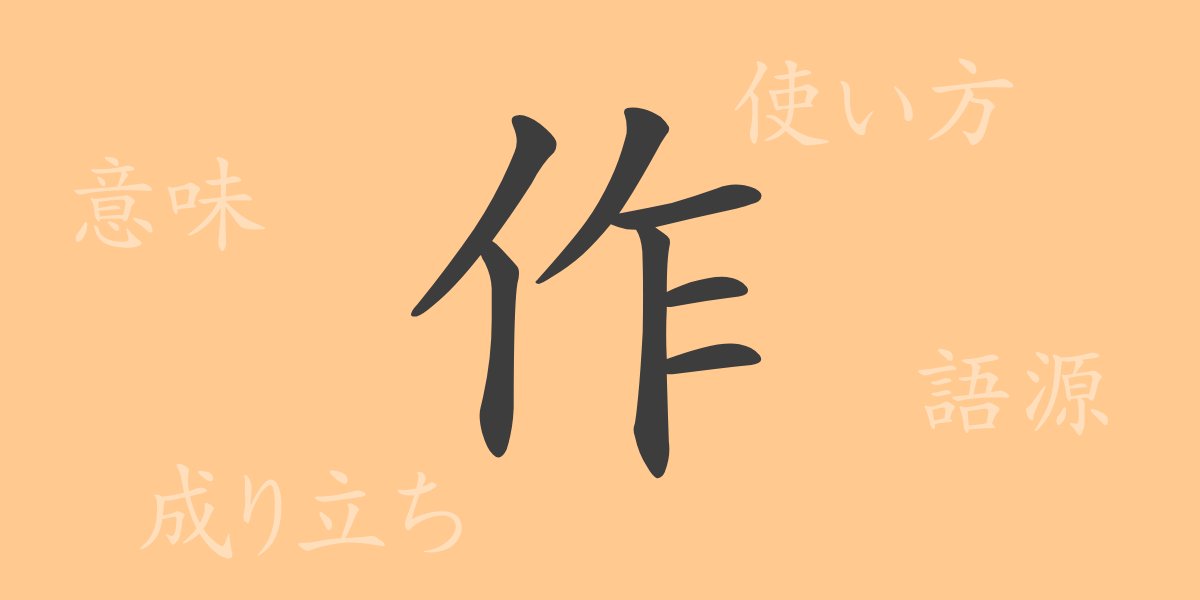The beauty of the Japanese language is reflected in its complex and rich characters. One of the common kanji, “作” (つく.る, saku), is deeply rooted in our daily lives. This article will shine a spotlight on the character “作,” exploring its origins, contemporary usage, and the charm it holds.
Origins of 作 (つく.る, saku)
The kanji “作” (つく.る, saku) originated in ancient China, representing actions related to farming and creation. It evolved from pictographs depicting a person tilling the soil. Over time, the character’s form has changed, but its fundamental meaning has remained consistent, symbolizing creation and production.
Meanings and Uses of 作 (つく.る, saku)
The kanji “作” (つく.る, saku) is used in words like “作る” (つくる, tsukuru – to make), “作業” (さぎょう, sagyō – work), and “作品” (さくひん, sakuhin – work of art). It refers to acts of creation or the results of such acts. Additionally, it appears in contexts like “作用” (さよう, sayō – effect) and “作文” (さくぶん, sakubun – composition), related to exerting influence and writing, respectively.
Readings, Stroke Count, and Radical of 作 (つく.る, saku)
The kanji “作” (つく.る, saku) demonstrates the diversity of written Japanese through its readings and structure.
- Readings: The on’yomi (音読み) readings are “サク” (saku) and “サ” (sa); the kun’yomi (訓読み) readings are “つく.る” (tsuku.ru) and “つく.り” (tsuku.ri).
- Stroke count: “作” (つく.る, saku) has a total of 7 strokes.
- Radical: The radical is 人 (ひと, hito or にんべん, ninben), indicating its relation to people.
Idioms, Phrases, and Proverbs Using 作 (つく.る, saku) and Their Meanings
The kanji “作” (つく.る, saku) is prevalent in various idioms, phrases, and proverbs in Japanese. Here are a few examples:
- “作文” (さくぶん, sakubun): Writing a composition or essay.
- “作業” (さぎょう, sagyō): Referring to work or tasks to be done.
- “作家” (さっか, sakka): A person who creates literary works, an author.
- “未完成の作” (みかんせいのさく, mikansei no saku): Refers to an unfinished work or project.
- The proverb “為せば成る、為さねば成らぬ何事も” (なせばなる、なさねばならぬなにごとも, naseba naru, nasaneba naranu nanigoto mo): It means “If you try, you can achieve anything; if you don’t try, nothing will be accomplished,” highlighting the importance of effort and perseverance.
Conclusion on 作 (つく.る, saku)
The meanings embedded in a single kanji can expand infinitely depending on the context in which it is used. “作” (つく.る, saku) symbolizes the fundamental human activity of creating and shaping things. Through this one character, we can appreciate the depth of the Japanese language and the power of words closely tied to our lives.

























